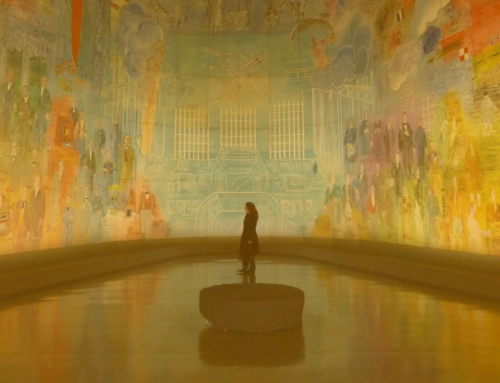Energy Efficiency in the Cultural Sector: A Vision for the Future.
Successfully Saving Energy in Museums, Depots, and Historical Buildings. An Introduction.
From: JOCHEN KÄFERHAUS | 11.10.2023
Käferhaus GmbH – Ingenieurbüro für intelligente Haustechnik, Wien
At the heart of our cultural institutions lies the duty to preserve our cultural heritage – a task that has taken on a new dimension today. In the face of the current energy and gas shortage, the cultural sector faces an unprecedented challenge: balancing art preservation with energy efficiency. This article demystifies the path to sustainability and presents initial practical approaches and strategies for energy efficiency in the cultural sector, thus paving the way for a greener future.
Energy Efficiency: A New Priority in the Cultural Sector
The cultural sector bears a significant and crucial responsibility: preserving the past for the future. Traditionally, this duty was linked with strict conservation rules. Today, the cultural sector is expanding its commitment to protect not only the heritage but also the environment for future generations. To achieve this, energy efficiency has become a new priority.
Innovative Strategies for Environmentally Conscious Energy Saving
Small steps can have a big impact. Adjusting climate control systems, such as redefining climate corridors and optimizing heating and cooling systems, can significantly reduce energy consumption. For example, redefining climate corridors and optimising heating and cooling systems according to visitor flow can reduce energy consumption by 30% and more. These adjustments are not only good for our planet but also for our budgets.
The Role of Building Physics and Intelligent Building Technology
A deep understanding of building physics is key to effective energy management. Investing in familiar and intelligent technologies such as radiant heating systems, efficient building envelopes with external solar shading can help create a stable and sustainable environment for art and visitors in the long term.
Investments for a Sustainable Future
Long-term energy savings require forward-looking investments. While non-investment measures provide immediate relief, long-term actions often require investments in building infrastructure. Utilising renewable energy sources and modernising building infrastructure are not only ecologically but also economically sensible. Supported by government subsidies, these investments can mark a decisive step towards a more sustainable future. In addition, EU standards urge controlled implementation – both in the verification procedure and in fact.
Overcoming Challenges and Resistance
Initiating change can be difficult, especially in the face of institutional inertia. Through consistent motivation, clear communication, training, and collaborative decision-making, we can collectively facilitate the transition to more efficient energy uses. It is essential to clearly highlight the economic and environmental benefits to achieve widespread agreement.
The need for energy conservation in cultural institutions is more urgent than ever today. It is time for leaders to question the ‘status quo’ and take bold steps towards a sustainable energy policy. The strategies presented here are a starting point for all those ready to embark on the path of energy efficiency.

